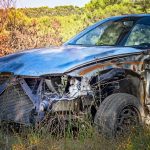
The Various Types of Car Accidents and How They Occur
Car crashes happen in seconds, but their effects can last for months or even years. Behind every accident is a cause: speeding drivers who lose control, distracted motorists who miss critical signs, or unsafe lane changes that turn into serious collisions. Understanding why these accidents occur is the first step toward preventing them and holding the responsible parties accountable.
These incidents don’t just leave dents in vehicles; they leave lasting effects on lives. People usually need medical attention, time off work, and legal help to file a car accident injury claim. This article dives into the most common types of car accidents, what causes them, and how they unfold in real life.
Table of Content
Rear-End Collisions
Rear-end collisions are among the most recurrent kinds of car accidents. They materialize when one vehicle hits the rear end of another. Drivers cause rear-end crashes when they tailgate or fail to react to sudden stops.
Distractions, such as phone use or daydreaming, also delay response time. Wet or icy roads increase the risk, especially during high-speed travel. Even at low speeds, a rear-end crash produces injuries and vehicle damage.
Head-On Collisions
Head-on collisions usually result in the most severe injuries and fatalities. These accidents take place when two vehicles moving in opposite directions hit each other front-to-front. Drivers drift into oncoming lanes due to fatigue, alcohol use, or loss of control.
Rural roads and areas without dividers witness these tragic incidents. Misjudged overtaking maneuvers or sharp turns can also cause this type of crash.
T-Bone or Side-Impact Collisions
Side-impact crashes, commonly called T-bone accidents, happen when the front of one vehicle strikes the side of another. Intersections are the most common setting for T-bone collisions. Failure to yield, running red lights, or ignoring stop signs triggers these violent impacts. The struck vehicle spins or flips, especially when hit at high speeds. The lack of side airbags increases the risk of injury to passengers.
Sideswipe Accidents
A sideswipe accident happens when two vehicles traveling next to each other make contact. Drivers drift into other lanes due to distractions, poor visibility, or failed blind spot checks. While some sideswipes leave only cosmetic damage, others cause one or both drivers to lose control and veer off the road. Highway driving and merging areas see a high number of these accidents.
Multi-Vehicle Pileups
Multi-car pileups involve three or more vehicles and usually unfold on busy highways. These crashes occur when one driver brakes suddenly or loses control, triggering a chain reaction. Fog, rain, or snow contribute to limited visibility and delayed stopping. High-speed traffic compounds the damage and increases the risk of secondary collisions as drivers struggle to avoid the congestion ahead.
Single-Vehicle Accidents
Single-vehicle crashes may involve just one car, but their impact can be severe. These accidents often happen when a driver swerves to avoid an obstacle, falls asleep at the wheel, or loses control due to speeding, sharp curves, or impaired driving.
Collisions with poles, trees, barriers, or animals are common outcomes. Rural roads, especially those with poor lighting, narrow lanes, or unexpected turns, see a higher rate of these incidents, highlighting the importance of caution even when no other vehicles are around.
Rollovers
A rollover happens when a vehicle tips onto its side or roof. These events frequently involve SUVs or trucks with higher centers of gravity. Sharp turns taken too quickly, collisions with curbs or medians, or sudden swerves initiate rollovers. Uneven terrain or tire blowouts also contribute to the issue. Occupants without seatbelts face increased danger in these crashes.
Car accidents don’t follow a single script. They happen for different reasons, in various ways, and with different outcomes.


